Benfeng Xu
DeepResearch Bench: A Comprehensive Benchmark for Deep Research Agents
Jun 13, 2025Abstract:Deep Research Agents are a prominent category of LLM-based agents. By autonomously orchestrating multistep web exploration, targeted retrieval, and higher-order synthesis, they transform vast amounts of online information into analyst-grade, citation-rich reports--compressing hours of manual desk research into minutes. However, a comprehensive benchmark for systematically evaluating the capabilities of these agents remains absent. To bridge this gap, we present DeepResearch Bench, a benchmark consisting of 100 PhD-level research tasks, each meticulously crafted by domain experts across 22 distinct fields. Evaluating DRAs is inherently complex and labor-intensive. We therefore propose two novel methodologies that achieve strong alignment with human judgment. The first is a reference-based method with adaptive criteria to assess the quality of generated research reports. The other framework is introduced to evaluate DRA's information retrieval and collection capabilities by assessing its effective citation count and overall citation accuracy. We have open-sourced DeepResearch Bench and key components of these frameworks at https://github.com/Ayanami0730/deep_research_bench to accelerate the development of practical LLM-based agents.
From Real to Synthetic: Synthesizing Millions of Diversified and Complicated User Instructions with Attributed Grounding
Jun 04, 2025Abstract:The pursuit of diverse, complex, and large-scale instruction data is crucial for automatically aligning large language models (LLMs). While there are methods capable of generating synthetic instructions at scale, they either suffer from limited grounding sources, leading to a narrow distribution, or rely on trivial extensions that fail to produce meaningful trajectories in terms of complexity. In contrast, instructions that benefit efficient alignment are typically crafted with cognitive insights and grounded in real-world use cases. In this paper, we synthesize such instructions using attributed grounding, which involves 1) a top-down attribution process that grounds a selective set of real instructions to situated users, and 2) a bottom-up synthesis process that leverages web documents to first generate a situation, then a meaningful instruction. This framework allows us to harvest diverse and complex instructions at scale, utilizing the vast range of web documents. Specifically, we construct a dataset of 1 million instructions, called SynthQuestions, and demonstrate that models trained on it achieve leading performance on several common benchmarks, with improvements that continually scale with more web corpora. Data, models and codes will be available at https://github.com/Ignoramus0817/SynthQuestions.
Rationales Are Not Silver Bullets: Measuring the Impact of Rationales on Model Performance and Reliability
May 30, 2025Abstract:Training language models with rationales augmentation has been shown to be beneficial in many existing works. In this paper, we identify that such a prevailing view does not hold consistently. We conduct comprehensive investigations to thoroughly inspect the impact of rationales on model performance as well as a novel perspective of model reliability. The results lead to several key findings that add new insights upon existing understandings: 1) Rationales can, at times, deteriorate model performance; 2) Rationales can, at times, improve model reliability, even outperforming their untrained counterparts; 3) A linear correspondence exists in between the performance and reliability improvements, while both are driven by the intrinsic difficulty of the task. These findings provide informative regulations on the broad utilization of rationales and raise critical implications on the procedure of explicitly aligning language models with implicit human thoughts. Codes can be found at https://github.com/Ignoramus0817/rationales.
MIRROR: Multi-agent Intra- and Inter-Reflection for Optimized Reasoning in Tool Learning
May 27, 2025Abstract:Complex tasks involving tool integration pose significant challenges for Large Language Models (LLMs), leading to the emergence of multi-agent workflows as a promising solution. Reflection has emerged as an effective strategy for correcting erroneous trajectories in agentic workflows. However, existing approaches only exploit such capability in the post-action stage, where the agent observes the execution outcomes. We argue that, like humans, LLMs can also engage in reflection before action execution: the agent can anticipate undesirable outcomes from its own decisions, which not only provides a necessarily complementary perspective to evaluate the decision but also prevents the propagation of errors throughout the trajectory. In this paper, we propose MIRROR, a framework that consists of both intra-reflection, which critically assesses intended actions before execution, and inter-reflection, which further adjusts the trajectory based on observations. This design systematically leverages LLM reflection capabilities to eliminate and rectify erroneous actions on a more comprehensive scope. Evaluations on both the StableToolBench and TravelPlanner benchmarks demonstrate MIRROR's superior performance, achieving state-of-the-art results compared to existing approaches.
Training LLM-Based Agents with Synthetic Self-Reflected Trajectories and Partial Masking
May 26, 2025Abstract:Autonomous agents, which perceive environments and take actions to achieve goals, have become increasingly feasible with the advancements in large language models (LLMs). However, current powerful agents often depend on sophisticated prompt engineering combined with closed-source LLMs like GPT-4. Although training open-source LLMs using expert trajectories from teacher models has yielded some improvements in agent capabilities, this approach still faces limitations such as performance plateauing and error propagation. To mitigate these challenges, we propose STeP, a novel method for improving LLM-based agent training. We synthesize self-reflected trajectories that include reflections and corrections of error steps, which enhance the effectiveness of LLM agents in learning from teacher models, enabling them to become agents capable of self-reflecting and correcting. We also introduce partial masking strategy that prevents the LLM from internalizing incorrect or suboptimal steps. Experiments demonstrate that our method improves agent performance across three representative tasks: ALFWorld, WebShop, and SciWorld. For the open-source model LLaMA2-7B-Chat, when trained using self-reflected trajectories constructed with Qwen1.5-110B-Chat as the teacher model, it achieves comprehensive improvements with less training data compared to agents trained exclusively on expert trajectories.
Automated Creativity Evaluation for Large Language Models: A Reference-Based Approach
Apr 22, 2025

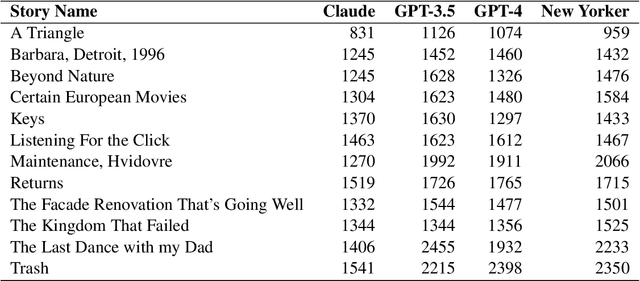
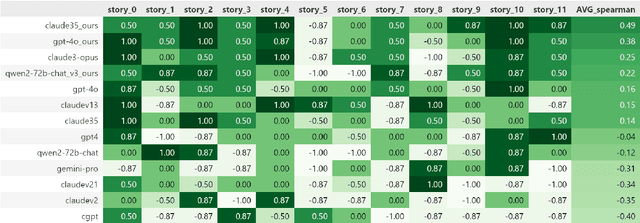
Abstract:Creative writing is a key capability of Large Language Models (LLMs), with potential applications in literature, storytelling, and various creative domains. However, evaluating the creativity of machine-generated texts remains a significant challenge, as existing methods either rely on costly manual annotations or fail to align closely with human assessments. In this paper, we propose an effective automated evaluation method based on the Torrance Test of Creative Writing (TTCW), which evaluates creativity as product. Our method employs a reference-based Likert-style approach, scoring generated creative texts relative to high-quality reference texts across various tests. Experimental results demonstrate that our method significantly improves the alignment between LLM evaluations and human assessments, achieving a pairwise accuracy of 0.75 (+15\%).
Benchmarking Large Language Models on Controllable Generation under Diversified Instructions
Jan 01, 2024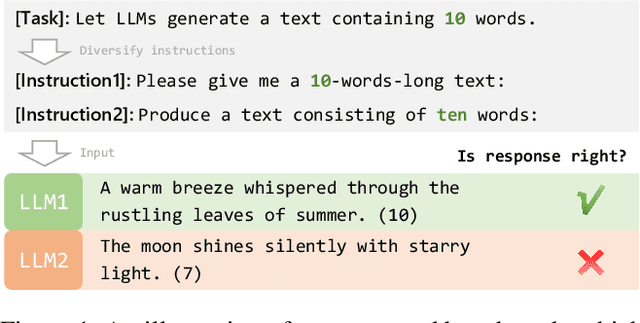

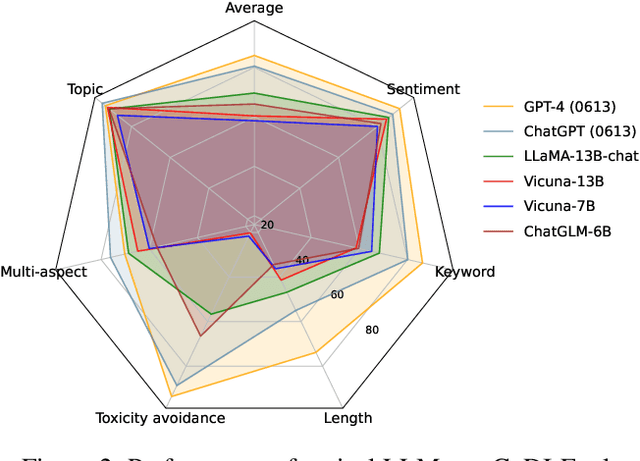

Abstract:While large language models (LLMs) have exhibited impressive instruction-following capabilities, it is still unclear whether and to what extent they can respond to explicit constraints that might be entailed in various instructions. As a significant aspect of LLM alignment, it is thus important to formulate such a specialized set of instructions as well as investigate the resulting behavior of LLMs. To address this vacancy, we propose a new benchmark CoDI-Eval to systematically and comprehensively evaluate LLMs' responses to instructions with various constraints. We construct a large collection of constraints-attributed instructions as a test suite focused on both generalization and coverage. Specifically, we advocate an instruction diversification process to synthesize diverse forms of constraint expression and also deliberate the candidate task taxonomy with even finer-grained sub-categories. Finally, we automate the entire evaluation process to facilitate further developments. Different from existing studies on controllable text generation, CoDI-Eval extends the scope to the prevalent instruction-following paradigm for the first time. We provide extensive evaluations of representative LLMs (e.g., ChatGPT, Vicuna) on CoDI-Eval, revealing their limitations in following instructions with specific constraints and there is still a significant gap between open-source and commercial closed-source LLMs. We believe this benchmark will facilitate research into improving the controllability of LLMs' responses to instructions. Our data and code are available at https://github.com/Xt-cyh/CoDI-Eval.
On the Calibration of Large Language Models and Alignment
Nov 22, 2023Abstract:As large language models attract increasing attention and find widespread application, concurrent challenges of reliability also arise at the same time. Confidence calibration, an effective analysis method for gauging the reliability of deep models, serves as a crucial tool for assessing and improving their reliability. However, such investigation has been comparatively underexplored. In this work, we conduct a systematic examination of the calibration of aligned language models throughout the entire construction process, including pretraining and alignment training. At each stage, we investigate how different training settings, such as parameter scales and training data, affect model calibration. To thoroughly assess model calibration, we evaluate models on three most concerned aspects: generation, factuality and understanding. Our work sheds light on whether popular LLMs are well-calibrated and how the training process influences model calibration.
Self-Evolved Diverse Data Sampling for Efficient Instruction Tuning
Nov 14, 2023Abstract:Enhancing the instruction-following ability of Large Language Models (LLMs) primarily demands substantial instruction-tuning datasets. However, the sheer volume of these imposes a considerable computational burden and annotation cost. To investigate a label-efficient instruction tuning method that allows the model itself to actively sample subsets that are equally or even more effective, we introduce a self-evolving mechanism DiverseEvol. In this process, a model iteratively augments its training subset to refine its own performance, without requiring any intervention from humans or more advanced LLMs. The key to our data sampling technique lies in the enhancement of diversity in the chosen subsets, as the model selects new data points most distinct from any existing ones according to its current embedding space. Extensive experiments across three datasets and benchmarks demonstrate the effectiveness of DiverseEvol. Our models, trained on less than 8% of the original dataset, maintain or improve performance compared with finetuning on full data. We also provide empirical evidence to analyze the importance of diversity in instruction data and the iterative scheme as opposed to one-time sampling. Our code is publicly available at https://github.com/OFA-Sys/DiverseEvol.git.
Qwen Technical Report
Sep 28, 2023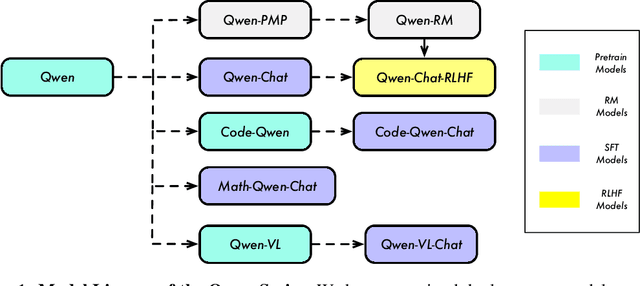

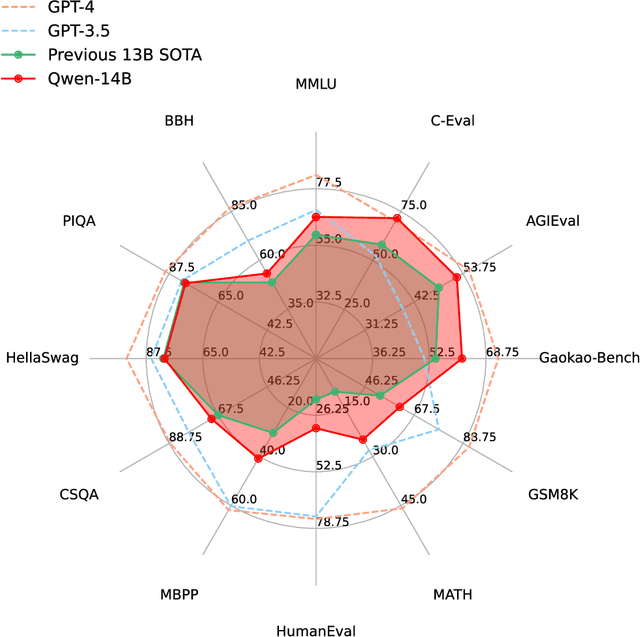
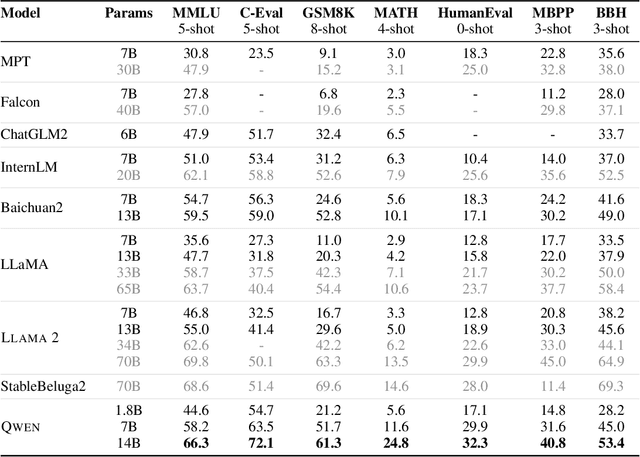
Abstract:Large language models (LLMs) have revolutionized the field of artificial intelligence, enabling natural language processing tasks that were previously thought to be exclusive to humans. In this work, we introduce Qwen, the first installment of our large language model series. Qwen is a comprehensive language model series that encompasses distinct models with varying parameter counts. It includes Qwen, the base pretrained language models, and Qwen-Chat, the chat models finetuned with human alignment techniques. The base language models consistently demonstrate superior performance across a multitude of downstream tasks, and the chat models, particularly those trained using Reinforcement Learning from Human Feedback (RLHF), are highly competitive. The chat models possess advanced tool-use and planning capabilities for creating agent applications, showcasing impressive performance even when compared to bigger models on complex tasks like utilizing a code interpreter. Furthermore, we have developed coding-specialized models, Code-Qwen and Code-Qwen-Chat, as well as mathematics-focused models, Math-Qwen-Chat, which are built upon base language models. These models demonstrate significantly improved performance in comparison with open-source models, and slightly fall behind the proprietary models.
 Add to Chrome
Add to Chrome Add to Firefox
Add to Firefox Add to Edge
Add to Edge